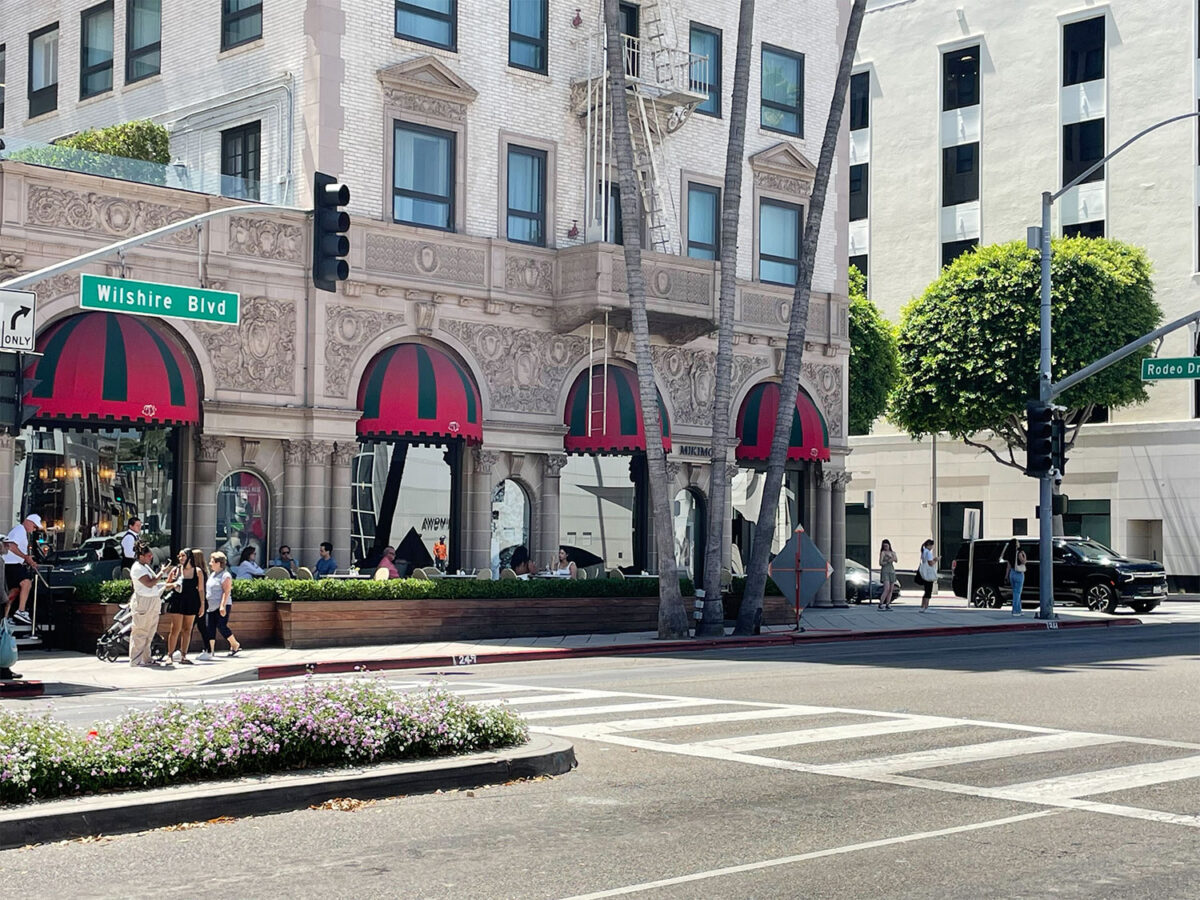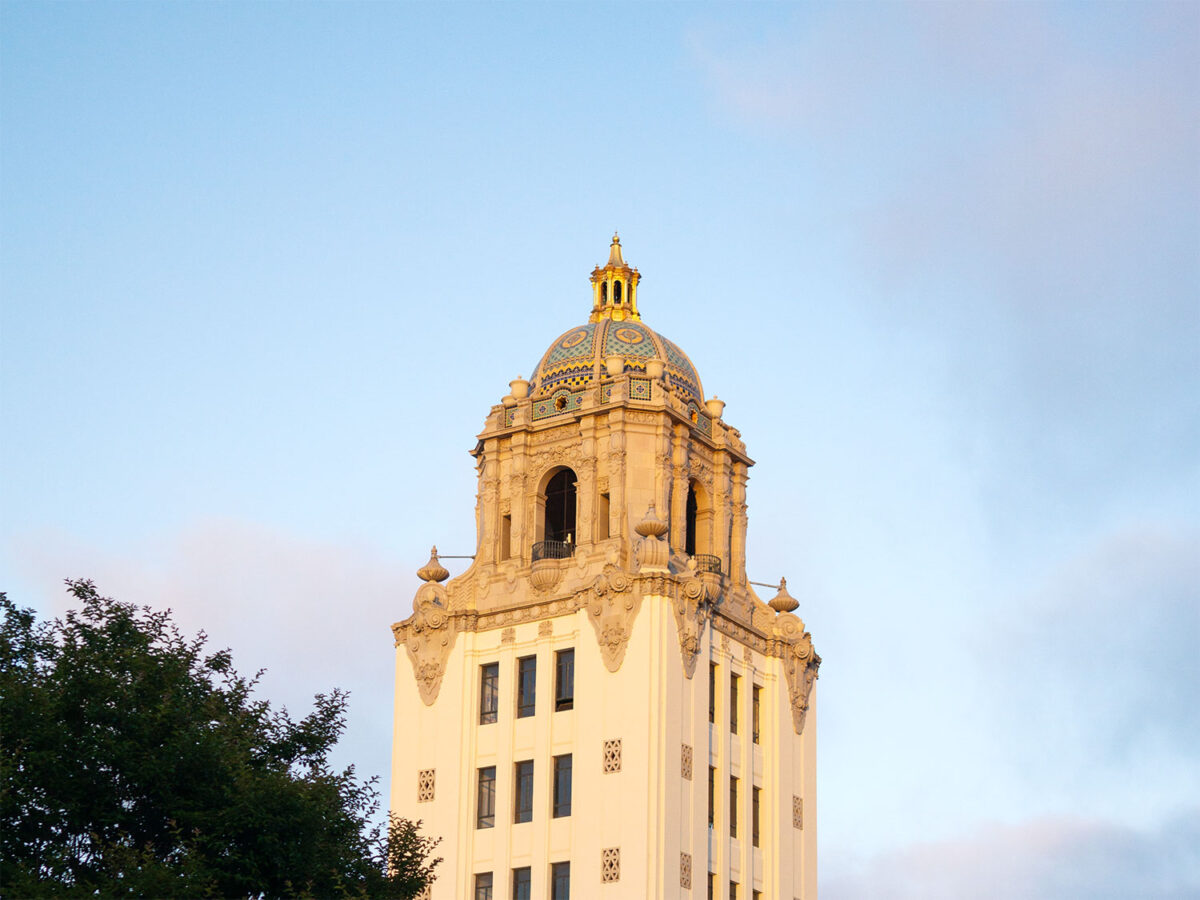On March 19 a Los Angeles Superior Court judge struck down the Beverly Hills urgency ordinance limiting assemblies in residential areas. Criminal charges against 25 protesters were dismissed, on grounds that the ordinance was unconstitutional. The city has not yet decided whether it will appeal the ruling.
“In this case a unique circumstance has arisen, the experience of characteristically urban mass protest within a suburban area. Beverly Hills responded with a unique and apparently unprecedented solution: silencing larger groups in public in residential areas at night,” wrote Judge Mark Windham in a nine-page ruling. “Our State Constitution shares principles of free expression with the First Amendment–their application to this unique circumstance yields what could be characterized as ‘a right not to be silenced in a public forum,’ which invalidates the ordinance.”
“The city believes that the ordinance was constitutional as a temporary restriction on demonstrations in residential areas,” Beverly Hills spokesperson Keith Sterling told the Courier. Even in light of the ruling, Sterling held that a permanent, less restrictive ordinance regulating nighttime demonstrations in residential areas passed in the fall “meets the constitutional requirements of the decision by Judge Windham.”
Following a June 12 protest on a residential street by the activist group Black Future Project, known at the time as Occupy BLM, the city passed Urgency Ordinance No. 20-0-2813. The ordinance limited residential assemblies to “no more than ten” people between 9 p.m. and 8 a.m. “in order to enable residents to sleep.” The measure exempted law enforcement, media, and “any assembly that is silent.”
On June 26, Black Future Project returned to Beverly Hills to protest the ordinance. “We returned on the 26th because Beverly Hills tried to over-exercise their privilege,” Black Future Project founder James Butler told the Courier.
The group traveled north on Rexford from Santa Monica Boulevard after 9 p.m., equipped with megaphones and a van carrying large speakers. Beverly Hills Police Department (BHPD) officers in riot gear intercepted the group and made 25 arrests by the end of the night. In the immediate aftermath of the arrests, the department drew condemnation from the National Lawyers Guild (NLG) for detaining protesters for as long as 24 hours.
Beverly Hills was not alone in instituting restrictions on protests. In response to the historic unrest in the county, cities including Los Angeles, Santa Monica, and Pasadena enacted curfews and restrictions on assemblies. But pushback and legal actions soon mounted following mass arrests and then-District Attorney Jackie Lacey and Los Angeles City Attorney Mike Feuer dropped all charges for curfew violations and other minor infractions.
Beverly Hills stayed the course in pursuing criminal charges.
“Beverly Hills took this extraordinarily aggressive approach and did so on much thinner ice,” civil rights attorney Jeffrey Douglas, who argued against the ordinance, told the Courier.
Given the city’s relatively small size, Beverly Hills outsources its prosecutorial needs to the firm of Dapeer, Rosenblit & Litvak, which filed the charges against the protesters on Aug. 14. City Attorney Laurence Wiener distanced the city from the decision to prosecute at the Sept. 1 City Council Regular Meeting.
“The prosecutor has an ethical duty to determine before he files any charges whether there is probable cause to support those charges,” Weiner said at the time. “They don’t make a judgment either way regarding whether or not this is a good prosecution or a bad prosecution from a political standpoint, and in fact, he doesn’t take direction from the City Council or the Mayor or even me regarding whether he should do that or not.”
As soon as the charges were filed, a team of volunteer attorneys representing the 25 defendants moved to dismiss them. The team, led by Douglas and co-counsel Bess Stiffelman, challenged the constitutionality of the ordinance, noting logical inconsistencies such as the 10-person limit.
“Ten people can make hellacious noise and under this ordinance, it’s fine. But eleven people making a little bit of noise–they’re criminals,” Douglas said.
Judge Windham sided with the defense, writing, “To be clear, a person within a group of eleven who says ’Hello,’ or ‘boo’ is subject to arrest! Everyone else in the group would be subject to arrest!”
At the time of the protests, many residents did express frustration and even fear. The police report of the June 26 protest notes that “a large percentage of [the City’s] population is comprised of Iranians and Jews of Christian and Jewish faiths,” many of whom have lost loved ones to “untold atrocities.” To those residents, the report says that the protest “is not merely an intrusion of their peace, rather, it is a terrifying reminder of their past.”
Douglas acknowledged the burden placed on locals by residential protests but argued that the limits on them by Beverly Hills curbed the very freedoms sought by those who took refuge in the United States.
“If I, in my community, have people drive by my home sounding horns at dinnertime to communicate something, it’s irritating, and it doesn’t matter whether it’s celebrating a high school graduation [or] whether it’s a political statement that I passionately disagree with or passionately agree with. I would just as soon nobody honk their horn,” Douglas said. “But the value of having that right and the ability to exercise it is infinitely precious; the alternative is extraordinarily dreadful.”







